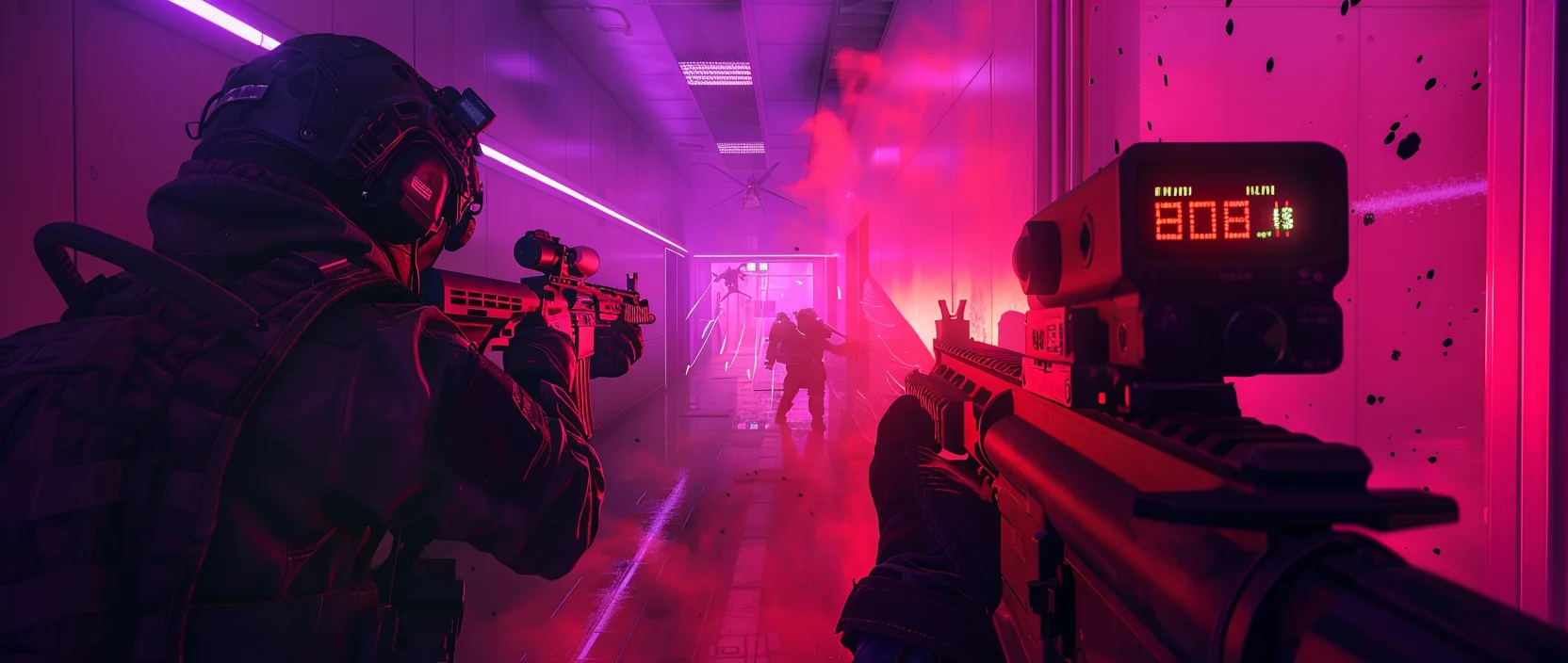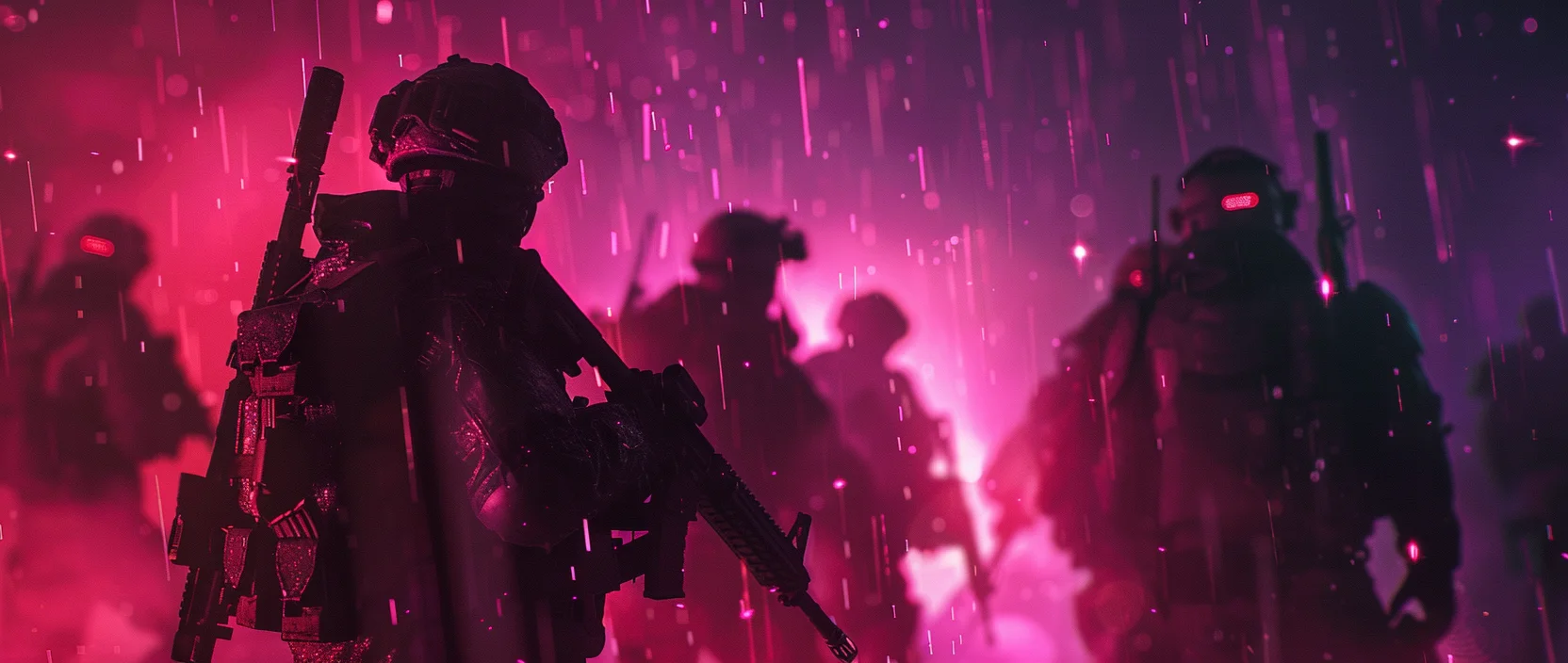Reaper Actual Web3 is an ambitious tactical shooter developed by Distinct Possibility Studios, led by John Smedley (creator of EverQuest and Planetside). It combines AAA-level gameplay, a persistent open world, and optional blockchain functionality. With over $30 million in funding, the game aims to become a breakthrough title in the Web3 gaming space, offering players a rich PvPvE experience with base ownership, item trading, and world customization.
Contents
- Concept of Reaper Actual
- Technical Foundation
- Gameplay and Core Mechanics
- Web3 Features and NFTs
- Economy and In-Game Trading
- Community and Modding
- Development Roadmap
- Conclusion

1. Concept of Reaper Actual
Reaper Actual is an MMO shooter with survival and extraction PvPvE elements set in a persistent open world. Players take on the role of Reapers, elite soldiers immersed in a large-scale conflict between five AI-driven factions. The game’s key innovation is its evolving world, where player actions have lasting consequences—captured or destroyed bases remain altered, and territorial control shifts over time.
AI factions wage their own wars dynamically, reacting to player behavior, making the environment unpredictable and alive. Developers describe the experience as a hybrid of Escape from Tarkov, The Division’s Dark Zone, and the scale of Planetside, forming a unique tactical Web3 shooter with strategic depth.
2. Technical Foundation
Built on Unreal Engine 5, Reaper Actual delivers high-end graphics, physics, and scalability for massive open-world engagements. The PC version will launch via Steam and the Epic Games Store, targeting a mainstream gamer audience.
The Web3 edition will be distributed separately, as major platforms restrict NFT-based content. It runs on Etherlink, a high-performance Layer 2 blockchain built on Tezos, offering low-cost and fast transactions—essential for real-time in-game economies.
Blockchain integration is fully optional and designed to be non-intrusive. All Web3 features—from ownership to item trading—are decoupled from the core gameplay, allowing Web2 and Web3 players to coexist in the same universe without friction.
3. Gameplay and Core Mechanics
Reaper Actual offers an intense, survival-based gameplay experience driven by tactical decisions and constant risk. Each session is not an isolated skirmish but part of a persistent war, requiring players to balance aggression, stealth, and strategic planning in a hostile, resource-limited world.
Key gameplay systems include:
- Extraction Raids: Players deploy into the world to gather loot, complete missions, and survive encounters. Successful extraction is required to retain rewards.
- Heat System: The more active and aggressive a player is, the more they attract attention—raising the risk of being hunted by others or AI factions.
- Base Ownership: Players can acquire and build bases, from military bunkers to underwater stations, defend them with AI and traps, and upgrade their infrastructure.
- Persistent Map: Player and AI actions shape the environment. Changes are saved and affect future operations and strategy.
- Crafting and Customization: Resources gathered in the field allow gear upgrades, base fortifications, and personalized loadouts.
This framework builds a living ecosystem where each player decision carries weight and can influence the broader world—enhancing immersion and long-term strategic engagement.
4. Web3 Features and NFTs
One of the key innovations of Reaper Actual is its optional Web3 integration. Unlike most blockchain games, digital assets are not forced on the player — users can choose a traditional gameplay experience without any interaction with crypto technologies. However, for those who want true ownership and control over in-game items, a full NFT infrastructure is available.
Players can trade and collect unique NFT-based items, including:
- Characters with unique backstories, appearances, and traits;
- Customizable bases and structures that persist across sessions;
- Rare cosmetic items and skins, some of which have already sold for hundreds of dollars.
Powered by Etherlink (Tezos L2), transactions are fast and cost-efficient. Importantly, NFT assets are purely cosmetic and do not grant gameplay advantages, maintaining a fair competitive environment. The "Play and Own" model gives players genuine control over their digital assets.
At launch, around 10% of the player base is expected to engage with Web3 features, potentially rising to 30% in the following years. This dual-approach ensures broad accessibility while offering advanced tools for blockchain enthusiasts.

5. Economy and In-Game Trading
The economic framework in Reaper Actual is divided into two layers: a traditional Web2 economy and an optional blockchain-powered Web3 economy. This structure allows players to choose how they wish to engage with digital assets—either conventionally or through full ownership and trading.
Comparison Table:
| Model | Description | Platforms & Tools |
|---|---|---|
| Web2 Economy | Battle passes, cosmetics, and DLC purchased via conventional stores. Assets remain platform-bound. | Steam, Epic Games Store, in-game shop |
| Web3 Economy | Ownership of NFT-based assets—bases, characters, and rare items. Allows resale, leasing, and secondary trading. | Etherlink (Tezos L2), NFT marketplaces |
This dual structure ensures accessibility for traditional gamers while enabling meaningful asset ownership for Web3 users. All NFTs are cosmetic-only, avoiding pay-to-win dynamics. Blockchain adds transparency and decentralization, empowering players to truly own, trade, and manage their items—creating a resilient and player-driven economy.
6. Community and Modding
Community involvement and modding are central pillars of Reaper Actual. The developers aim to turn the game into a living platform shaped by its players. Users will be able to host private servers with custom rulesets and game modes, allowing for experimentation and long-term world-building.
Tools will be provided for modifying balance, maps, and UI, as well as for creating and monetizing custom content. NFT integration opens the door to selling user-generated skins, mods, and items on supported marketplaces, giving creators tangible rewards for their work.
This ecosystem encourages the formation of local player communities with persistent maps, storylines, and economies—transforming Reaper Actual from a game into a dynamic, co-created universe.
7. Development Roadmap
According to the developers, Reaper Actual’s rollout will be staged. In Q3 2025, an alpha version will launch for limited testers, focusing on core mechanics and early feedback. The full PC release is planned for early 2026, bringing expanded features and content.
Roughly six months post-launch, the game will shift to a Free-to-Play model to increase accessibility and player base growth. Between 2026 and 2027, the team will expand to console platforms, integrate advanced modding support, and scale servers to accommodate over 200 players simultaneously.
Later stages include the launch of a native token, DAO-style governance, and community-driven in-game events. Backing from strategic partners like the Tezos Foundation further strengthens the project’s infrastructure and long-term viability.
8. Conclusion
Reaper Actual Web3 is more than just a shooter—it's a bold reimagining of the genre through modern technology and decentralized systems. A persistent world, hybrid PvPvE structure, base ownership, deep customization, and optional Web3 mechanics give it the potential to become a standout title in both traditional and blockchain gaming sectors.
With veteran leadership from John Smedley, a clear economic vision, robust modding capabilities, and cutting-edge tech via Unreal Engine 5 and Etherlink, the game stands on solid ground. Most importantly, it respects player choice—allowing those uninterested in Web3 to enjoy the full experience without compromise.
If the development team maintains this balance, Reaper Actual could set a new standard for what AAA blockchain-enabled games can achieve.





